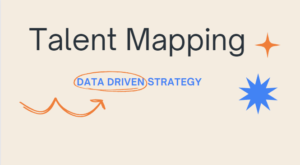
As a recruiter, your primary responsibility is to facilitate the hiring process at your company. This often requires gathering internal and external data to inform decisions and convince hiring managers. Therefore, it is essential for recruiters to have a solid understanding of talent mapping strategy.
Talent mapping involves the process of gathering labor intelligence data, which can be used to persuade leadership and increase the likelihood of successfully hiring top talent. By leveraging this data, recruiters can make informed decisions and provide valuable insights to their hiring managers. Ultimately, talent mapping is an important tool for recruiters to help drive successful hiring outcomes for their company.
The importance of Talent Mapping:
Talent mapping involves conducting research and collecting data to gain a deeper understanding of a specific demographic for recruitment purposes. This information can be used to identify market trends, appropriate salaries, necessary education, and job titles required to fulfill the job requirements.
To achieve this, recruiters should create a comprehensive talent map that includes a variety of data points for each role. This will enable them to gain a better understanding of the local market, allowing for more effective recruitment and hiring of potential candidates.
What components should a recruiter include in their talent map? Here are several categories that talent maps typically cover:
Websites and Resources: Recruiters can utilize social recruiting and social research applications to locate contact information for potential candidates on professional networking sites.
Competitor Company Data: Targeting the employees of a competitor can provide a strategic advantage for a recruiter’s company by accessing valuable talent, industry knowledge, and competitive insights.
When mapping out competitors, recruiters should consider gathering the following information:
• Industry • Headquarters and remote locations
• Talent size
• Regional salary compensation
• Transferable skills
• Comparable job titles
• Number of job openings
• Team structure
• Regional diversity
• Internal activity such as layoffs, stock market performance, and leadership changes.
How to include Talent Mapping discussions with your hiring team?
Recruiters can use talent mapping data in an intake meeting with a hiring manager to provide insights into the job market, potential candidates, and competition. Here are some specific ways in which recruiters can use talent mapping data in an intake meeting:
Understand the job requirements: By analyzing the talent mapping data, recruiters can gain a better understanding of the skills, experience, and education required for the job. They can use this information to ask targeted questions to the hiring manager during the intake meeting and ensure they have a clear understanding of the role.
Provide insights into the job market: Talent mapping data can help recruiters to identify market trends, such as the supply and demand for specific skills and the availability of qualified candidates in the local market. This information can be shared with the hiring manager during the intake meeting to set realistic expectations about the hiring timeline and candidate availability.
Identify potential candidates: Talent mapping data can help recruiters to identify potential candidates who possess the required skills and experience for the job. Recruiters can share this information with the hiring manager during the intake meeting to provide a list of potential candidates to consider.
Assess the competition: Talent mapping data can provide insights into the competition, including the talent pool available to competitors, salary ranges, and other job market trends. This information can be used to develop a competitive hiring strategy and ensure the company is offering a competitive compensation package to attract top talent.
Learn why Talent Mapping is important in talent sourcing:
Talent mapping involves gathering and analyzing data on potential candidates, which can help recruiters identify the most qualified individuals for a particular role. By leveraging this information, recruiters can develop a more targeted and effective sourcing strategy, resulting in a greater likelihood of finding and hiring the best candidate for the job.
If you are interested to really understand the fundamentals of Talent Mapping I recommend checking out my book below:
Talent Mapping: A Recruiter’s Guide to Competitive Talent Intelligence Book
This book is essential for recruiting and sourcing professionals who want to leverage data and competitive intelligence to create a successful Talent Sourcing strategy. It provides valuable market research data on locations, demographics, competitors, industry trends, universities, and salaries. The book covers the entire process of creating a talent map, including how to gather data from free and paid resources and present the talent mapping and sourcing plans to the hiring manager. The target audience includes North American-based Talent Acquisition teams, HR Business Partners, Recruiting Managers, Talent Sourcers, and Recruiters who want to use talent mapping data to create a talent sourcing strategy.
Recommended Reading:
Using Boolean Strings to find healthcare professionals online
The best headphone options for recruiting calls
List of Appsumo tools for recruiters
- AI Search Will Transform Talent Sourcing Forever - January 10, 2025
- Build an AI Sourcing Assistant using ChatGPT 4 - January 10, 2025
- Top Recruiting Leaders to Follow in 2025 - January 8, 2025
